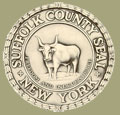|
|
Best management practices for home lawns
Soil Management
- Aerify and renovate compacted soils to restore turf coverage.
- Install drain tiles to redirect excess water away from areas with extensive drainage problems.
- Use organic fertilizers and amendments on newer stands of turf to increase nitrogen absorption.
Grass Selection
- Choose disease-resistant and drought-tolerant tall fescue blends or ďlow inputĒ validated perennial ryegrass and Kentucky bluegrass cultivars.
- Tall fescue is a preferred low nitrogen input turfgrass species for lawns and has excellent season long nutrient uptake. Perennial ryegrass would be a good second choice.
Turf Establishment
- Donít apply high nitrogen fertilizer before newly planted grass germinates or new sod has rooted.
- Use slow release nitrogen fertilizers instead of water soluble nitrogen fertilizers when establishing a new lawn.
Mowing
- Mow lawns to a height of 3 inches.
- Return clippings to recycle nutrients and reduce fertilizer need.
- Do not mow just prior to fertilizer applications. Wait 2, preferably 4, days after mowing to fertilize.
Irrigating
- Water lawns based on need, not on a schedule.
- Irrigate only when water loss due to evapotranspiration (ET) exceeds precipitation.
- Wet the root zone of the turf, typically the top 4-6 inch layer of soil.
- Adjust water rates to take into account shaded areas or areas with lower air flow. Those areas will have lower ET rates.
- Keep mowing heights as high as possible in the summer months.
Thatch Management
- Subsurface layering of undecomposed organic material can create poor drainage, increase nutrient losses through runoff, and result in poor use of fertilizer nitrogen.
- Reduce thatch to Ĺ inch or less to improve drainage and decrease runoff and nitrogen loss.
Fertilizing Lawns
- Base phosphorus and potassium applications on soil test results.
Nitrogen Rates
- Well established lawns where clippings have been returned may need little or no nitrogen. Other lawns may require up to1.5 to 3.0 lbs nitrogen per 1,000 square feet per year.
- Donít apply more than 1 lb of nitrogen per 1,000 square feet per application. Itís better to apply nitrogen at the 0.5 lb per 1,000 square feet rate at several key times during the season.
- Donít apply more than 0.5 lb of water soluble nitrogen per 1,000 square feet per application.
Timing
- Donít apply fertilizer in the spring unless the turf is thin or weeds are encroaching.
- Donít apply fertilizers when soil temperatures are below 50ļ F.
- Reduce or eliminate fertilizer rates during peak summer stress.
- Donít apply fertilizer in late fall. Make your last application in September or make two smaller applications one in early September and the other in early October.
Application
- Inspect and calibrate equipment before applications.
- Review area of application and determine square footage of area to be treated.
- After application, apply ľ inch or less of water to wash fertilizer into the soil profile.
- Do not apply fertilizer within 20 ft of surface water, storm drains or groundwater recharge areas.
- Maintain buffer areas around impervious surfaces and surface water features.
- Sweep up any material spilled or accidentally applied to impervious surfaces.
Weed Management
- If turf is thin, a light spring fertilizer application can improve turf development to crowd out weeds.
- Donít cut your grass less than 3 inches tall. Tall grass sends down deeper roots helping outcompete weeds.
- Organic fertilizers may provide better weed prevention particularly at higher cutting heights.
|

